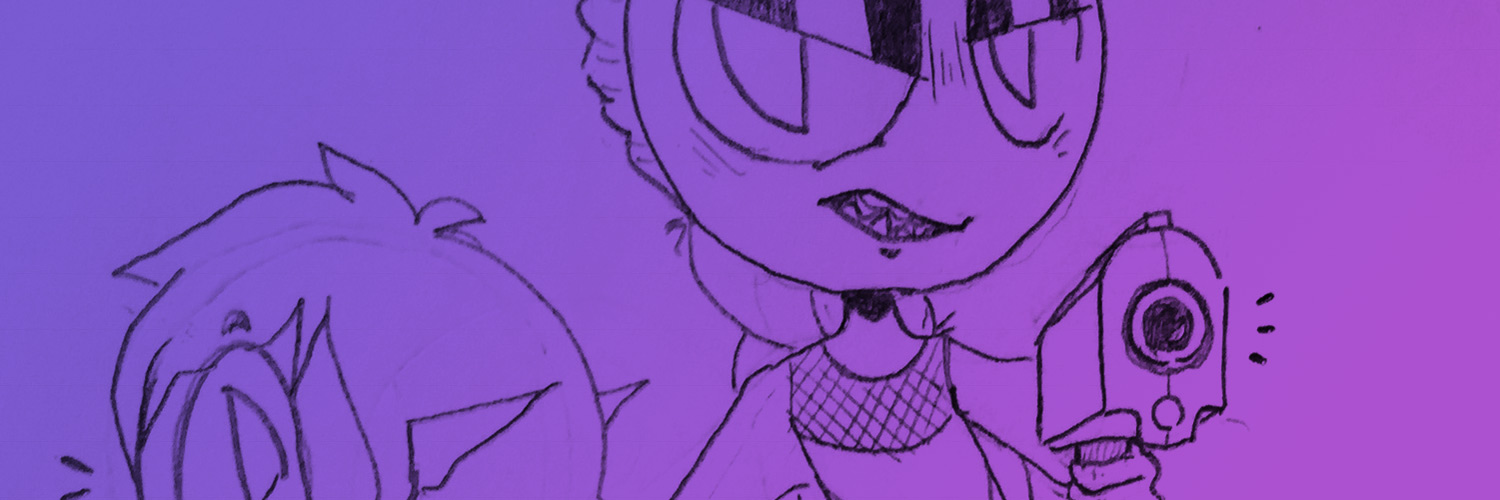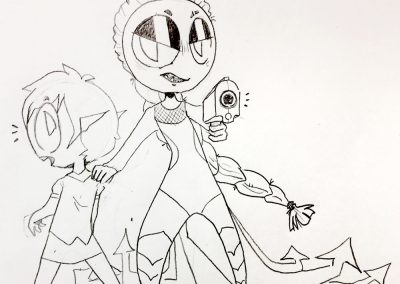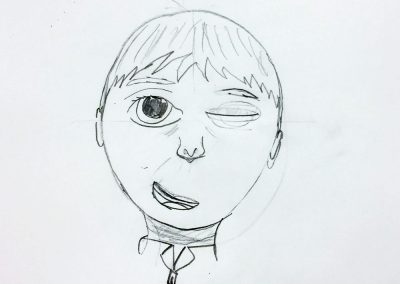OVERVIEW
Students have lots of fun working on cartoon mashups while they learn how to work with expressions, facial elements, guidelines, and redrawing. Pen and ink is used for a final cartoon drawing.– – –
Grades 3 – 5
1 Hour & 30 Minutes to Two hours
SCROLL & TEACH LESSON PLAN
Don’t worry about anything. Just spend a few minutes reading the lesson plan and printing out your PDFs. Then check out the READY, SET, GO! section and print your prep-page, which includes checklists and an “at a glance” outline of the lesson so you can stay on track when you’re teaching. Set out the materials from the list on your prep page and you’re ready.
That’s all you need to know. Every Step is a different color. Just use your device to Scroll & Teach!
Art Supplies Are Needed
Our lessons are designed to work with very specific supplies (see our supplies page using the button below). We recommend ordering what you need for home delivery. However, you can try and make do with what you have on hand during the health crisis.
Lesson At A Glance
A brief overview of each step. Buttons jump to each section for detailed information.
optional – Draw from still life or reference
10 Min – Draw big shapes of animals and person
20 Min – Practice drawing basic cartoon parts
12 Min – Practice drawing basic cartoon parts
20 Min – Combine different animals and people
10 Min – Draw light guidelines for this combination
20 Min – Redraw over your lines in ink
5 Min – Everybody helps clean
Use this button to jump down to “READY, SET, GO!” – our preparation section at the bottom of each lesson. You’ll find information on what is being taught, a full list of supplies, room prep, and what to expect from your young artist(s).
LESSONPLAN
STEP 1. Warm Up - Optional
A quick drawing can help students move into a lesson in a relaxing wayTap the button below to start a timer in a new tab/window.
draw
M A T E R I A L S
- 14″ x 17″ Sketch Paper
- Ebony Pencil OR
- Compressed Charcoal
- Stretchy Eraser OR
- White Eraser
Have several large and medium sized objects set out and available to sketch. You can use items such as:
- A suitcase
- A chair or stool
- Basketballs
- A cooler
- Toys
- Kitchen items
Students should be standing and drawing in their large sketch pad (we use 14″ x 17″ ones). Remind them to use arm movements rather than just their wrist. Sketches should be fast, loose, and fun, but students should be observing carefully, and working towards accuracy, instead of just playing around.
explain
M A T E R I A L S
- Device to display videos & Pinboards
Introduce two choices for the lesson.
Today, artists get to pick which project to do.
Magazine collage
- There are two ways to use magazines. 1) Use the colors as small mosaic pieces for creating larger images; 2) Use the photographic images and combine them in new ways. Artists may choose to combine the two methods. It’s also ok to use other papers in addition to magazines.
- Show the Drawing with Scissors video if you need to.
Pencil drawing
- Set up something on your own to draw or find reference from a magazine or book
- Remember that a still life needs a strong light source from one direction
Show Demo Videos and Pinterest Boards.
Drawing With Scissors Demo
Pinterest Gallery – Collages
Tap the icon to the left to open our special Pinboard showing examples of artwork to display to your class. See our Article for making Pinterest work on larger displays. You can also use a laptop or large tablet and gather everyone around like you’re using a book.
Pinterest Gallery – Detailed Pencil Drawings
Tap the icon to the left to open our special Pinboard showing examples of artwork to display to your class. See our Article for making Pinterest work on larger displays. You can also use a laptop or large tablet and gather everyone around like you’re using a book.
Prepare
M A T E R I A L S
- 14″ x 17″ Sketch Paper
- Pencils
- Erasers
- Scissors
- White sheets of copy paper to collect clippings
- Child-appropriate magazines
For the Magazine Collage –
- .Collect images and/or colors for a mosaic effect.
- Consider adding a self-portrait! Take a picture and print it out on your desktop printer.
- Cut and arrange your images so you can see them all.
For the Pencil Drawing –
- Find reference – take no more than 5 minutes to search and set up or print something out.
- Draw 2 or 3 Sketches to familiarize
- Thumbnail drawings help you compose. These are very small drawings of 1 or 2 inches wide. Just arrange the big shapes to make a good composition.
M A T E R I A L S
- 14″ x 17″ Sketch Paper
- Pencils
- Erasers
- Scissors
- White glue OR Modpodge
- Water (for thinning glue)
- OR acrylic medium
- Flat brushes for glue/medium application
- Shallow bowls for glue/medium
- White sheets of copy paper to collect clippings
- Child-appropriate magazines
- Water & Paper Towels
STEP 5. Clean Up
5 MinutesArtists Always Clean
Students clean up their work area.
- Wash hands
- Super-wash brushes if used. (Run under water for 1 full minute while gently spreading out the bristles).
- Put art supplies away
- Wipe tables & toss trash
- Remove any smocks (last)
- Check for items on floors and tables
Prepare
M A T E R I A L S
- 14″ x 17″ Sketch Paper
- Pencils
- Erasers
- Scissors
- White sheets of copy paper to collect clippings
- Child-appropriate magazines
For the Magazine Collage –
- .Collect images and/or colors for a mosaic effect.
- Consider adding a self-portrait! Take a picture and print it out on your desktop printer.
- Cut and arrange your images so you can see them all.
For the Pencil Drawing –
- Find reference – take no more than 5 minutes to search and set up or print something out.
- Draw 2 or 3 Sketches to familiarize
- Thumbnail drawings help you compose. These are very small drawings of 1 or 2 inches wide. Just arrange the big shapes to make a good composition.
%
Insights
This lesson provides understanding
%
Technique
This lesson shows application and movement
%
Self Expression
This lesson allows personal freedom
OBJECTIVES
- Practice and improvement working on creative composition
- Understanding how to think outside of conventional boundaries
- Accomplishment in creating original artwork
- Fulfillment by self expression in collage or pencil
TROUBLESPOTS
Over soaked paper – If you brush and move a wet clipping around too much, it becomes very wet and will tear easily.
Shading without technique – In pencil shading, it’s important to have a consistent technique over the entire piece. If scribbly, it needs to be the same type of scribbles everywhere. If hatch shaded, then the hatch marks should all go in one direction – or – they can go in many directions but the variety of directions must be the same throughout.
ART WORDS
Thumbnail – Artists tend to jump right into their work and then modify it over and over because it was not composed before they began. Only by drawing tiny thumbnails (about 1″ across), can you work on the big shapes and the overall design of a piece without getting pulled into the drawing. Once you begin drawing, your mind enters a completely different mode of thinking in details.
Big Shapes – Every work and reference can be divided into just a few very large areas. If an artist works on getting these shapes accurate, then the details can be worked on afterwards without having to modify or begin over.
ROOMPREP
Real Simple and other household magazines have lots of nice large images. Be very cautious though, since some advertising and advice collumn images can be innapropriate. Go though your magazines and tear out these images ahead of time.
Print all of your PDFs from the lesson plan and cut any references apart as needed.
What your room needs
Here are your printable lists and room prep instructions.
CLASSROOM
MATERIALS
- iPad or TV to display Pinboard
- Scissors
- White sheets of copy paper to collect clippings
- Child-appropriate magazines
- White glue OR
- Modpodge
- Water(for thinning glue) OR
- Acrylic medium
- Shallow bowls for glue
- Paper towels
- Cleaning wipes
- Sink
- Waste baskets
- Well-lit spot for photos
- Camera or camera-phone
STUDENT’S
MATERIALS
- 14” x 17” Sketch paper
- Ebony pencil
- White Eraser
- Charcoal
- Stretchy Eraser
- Flat brushes






